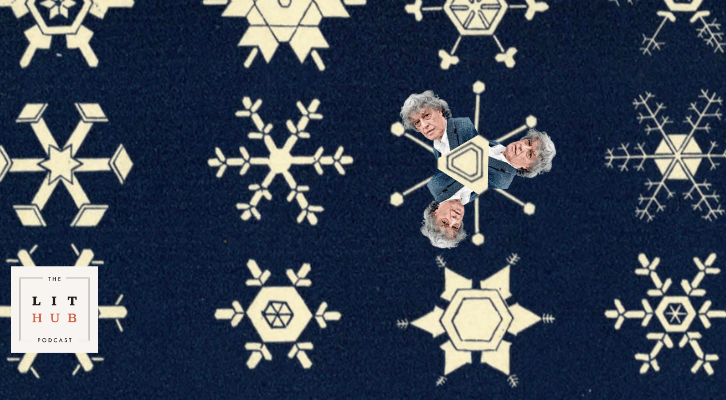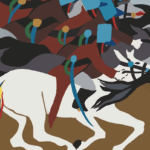The story within a story has been around for centuries. It’s also known as mise en abyme, which means “placed into the abyss.” In heraldry, it is the technique of putting a copy of an image inside a larger image on a coat of arms. I’ve also heard it referred to as a literary version of the Matyroshka doll, which is a great metaphor—the story existing within the book isn’t usually a “copy” of the main narrative, exactly, but if you read it carefully enough, it can be a micro-sized reflection of it, and its existence usually drive the stories, comments about characters in an interesting, original way, or, in the case of my latest, ties everything together. If you’re also obsessed with metafiction, check out these other thrillers that also feature narratives inside narratives.
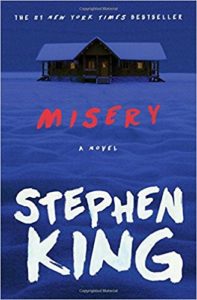
Stephen King, Misery
Readers can get really emotional when authors don’t live up to their expectations, but Annie Wilkes, in Stephen King’s classic horror novel, takes the cake. (I’m a huge Stephen King fan, so I was thrilled when a King novel popped into mind for this piece.) Annie rescues famous writer Paul Sheldon from a car accident, only to reveal that she’s his “biggest fan” and is furious about some of the choices he’d made in his Misery book series. I love how the book within the book in this case is a re-writing of his novel at metaphorical gunpoint. I haven’t achieved nearly the same kind of success King has as an author, but I will say that I’ve received emails about why, say, I killed Toby Cavanaugh in the second book of Pretty Little Liars. Passionate readers get lost in their stories, and sometimes the line between fiction and reality become blurred. Stephen King is one of my favorite authors, both for prolifically producing page-turners and managing to make big statements about art, humanity, and connection.
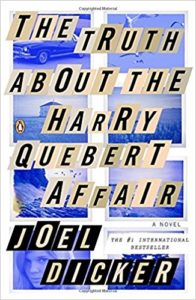
Joel Dicker, The Truth about the Harry Quebert Affair
Marcus Goldman is a celebrated novelist who’s stressing out coming up with an idea for a second novel. (As an author, I can relate!) When his mentor, Harry Quebert, is suddenly embroiled in a twisty, murderous scandal (a dead young woman, an age-old secret), Goldman rushes off to help and save his friend…and solve the case. Et voila, it also inspires his new novel, not that Marcus is thrilled about exposing his old friend. It’s got tight twists and turns, and get this—it’s a novel about a novel, but the novel also contains a novel, the one that made Quebert Philip Roth-level famous.
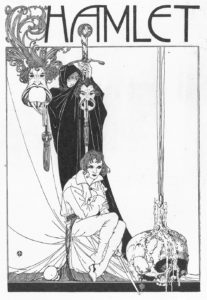
William Shakespeare, Hamlet
This surprisingly wasn’t the first story nested within another story (The Canterbury Tales was centuries earlier, but I still shudder when I remember slogging through it in British Literature in college), but it’s one of the best. Vengeful, near-crazy Hamlet, who’s grieving over his father’s murder, puts on “The Mousetrap” play for his uncle, Claudius, and mother, Gertrude; the play mimics what Hamlet’s almost sure Claudius did to the late king. The actor on stage pantomiming Claudius’s murderousness distances us from the truth of what actually happened, but in forcing the guilty party to watch a fictionalized version of his crime in big, bold, reality TV-esque emotions, Hamlet gets a telling peek at Claudius’s psyche. It’s a brilliant technique and probably inspired a lot of stories within stories since…but then, it’s Shakespeare, and hasn’t he pretty much inspired everything?
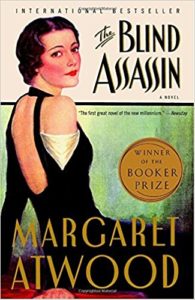
Margaret Atwood, The Blind Assassin
Everyone should read—and love—Margaret Atwood, and The Blind Assassin is a great example of a novel within a novel. In the present tense, Iris is trying to figure out what made her sister, Laura, drive her car off the cliff. Then we descend into a seamy novel of two lovers meeting in shabby hotels to have sex—the man in the story tells his lover a tale of a blind assassin living in a science fiction world. Sounds bonkers, but the multiple stories do connect as an overarching comment on the main character’s life, struggles, and feminist perspective. Atwood’s writing is so rich, it’s easy to go along on her journey.
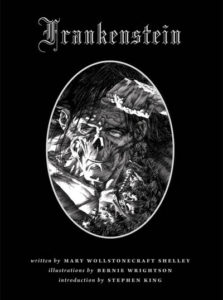
Mary Shelley, Frankenstein
This classic novel starts out with Captain Walton, who is marooned at the North Pole (because what better place to maroon a character), writing to his sister about his concerns with a certain Doctor Frankenstein; later in the narrative, Frankenstein takes over, but it’s really the story the monster tells him—and us—that gets at the horror and darkness both of this novel, of Frankenstein’s psyche, and of the dark, Gothic mentality of the culture at the time the novel was written.
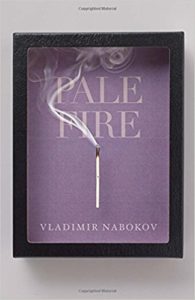
Vladmir Nabokov, Pale Fire
Everyone talks about Nabokov’s Lolita, but Pale Fire is brilliant as well. A poet, John Shade, has been murdered; his legacy is a 999-line poem in four cantos. His editor, Charles Kimbote, comments on the poem in a hypertextual sort of way—but in his comments, he also tells his own story, however unreliably. We’re never sure exactly who Charles Kimbote is—some theorize that he’s an alter ego of John Shade himself and that Shade planned his own death, some say that Kimbote is the one who’s real and Shade never existed. But it’s comical, satirical, and full of the literary genius you can expect from Nabokov, and a thrill to read.
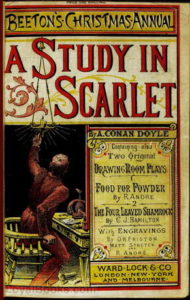
Arthur Conan Doyle, A Study In Scarlet
Yes, even Arthur Conan Doyle nested a story inside his stories—his very first Sherlock Holmes novel, to be precise. Readers are carried along with Holmes and Watson as they are investigating a murder (with fun moments of crime scenes, a warning written on a wall in blood, poisoned pills, and a body count, including a dead terrier) but suddenly the narrative switches to a long tale about Mormon settlers in Utah. Seems a bit disjointed, but if you stick with it you’ll learn why it’s important to the story—and why Sherlock Holmes is such a master sleuth. Fun fact: Apparently Conan Doyle wrote this book in less than three weeks. Because, you know, writing is really easy.
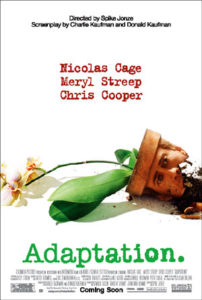
Adaptation (film)
I know this is a film, but I thought it deserved an honorable mention. A screenwriter has been tasked with writing the adaptation to a New Yorker piece about orchids; when he suffers terrible writer’s block, he begins to interview the author of the piece herself, only to begin to wonder if she’s lying about her entire account. It’s an entertaining look at the agony of the writing process, the desperation when a writer is blocked, and the jealousy that comes when other authors succeed, as the main character’s twin brother is far more ambitious than he is. Let’s face it—all of us writers are jealous, confused, grappling, desperate, angry, sketchy people, especially when on deadline. If you’ve attempted writing fiction—or even if you’ve just enjoyed it—this story will resonate. And hopefully the others will, too.





